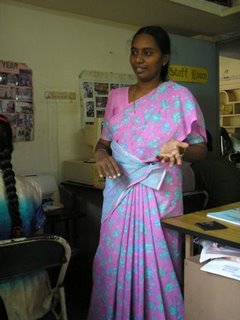A Strange Parade
In a recent issue of The Atlantic, Clive Crook, a senior editor of that magazine used Dutch economist Jan Pen’s image developed in 1971 to show the pattern of incomes in an economy.
Suppose that every person in the economy walks by, as if in a parade. Imagine that the parade takes exactly an hour to pass, and that the marchers are arranged in order of income, with the lowest incomes at the front and the highest at the back.
Also imagine that the heights of the people in the parade are proportional to what they make: those earning the average income will be of average height, those earning twice the average income will be twice the average height, and so on. We spectators, let us imagine, are also of average height.
We would not see a series of people of steadily increasing height – that’s far too bland a picture. The observers would see something much stranger. They would see, mostly, a parade of dwarves, and then some unbelievable giants at the very end.
As the parade begins, Pen explained, the marchers cannot seen at all. They are walking upside down, with their heads underground—owners of loss-making businesses, most likely. Very soon upright marchers begin to pass by, but they are tiny. For five minutes or so, the observers are peering down at people just inches high—old people and youngsters, mainly; people without regular work, who make a little from odd jobs. Ten minutes in, the full-time labor force has arrived: to begin with, mainly unskilled manual and clerical workers, burger flippers, shop assistants, and the like, standing about waist-high to the observers. And at this point things start to get dull, because there are so very many of these very small people. The minutes pass and pass, and they keep on coming.
By about halfway through the parade, Pen wrote, the observers might expect to be looking people in the eye—people of average height ought to be in the middle. But no, the marchers are still quite small, these experienced trades people, skilled industrial workers, trained office staff, and so on—not yet five feet tall, many of them. On and on they come.
It takes about forty-five minutes—the parade is drawing to a close—before the marchers are as tall as the observers. Heights are visibly rising by this point, but even now not very fast. In the final six minutes, however, when people with earnings in the top 10 percent begin to arrive, things get weird again. Heights begin to surge upward at a madly accelerating rate. Doctors, lawyers, and senior civil servants twenty feet tall speed by. Moments later, successful corporate executives, bankers, stockbrokers—peering down from fifty feet, 100 feet, 500 feet. In the last second you glimpse pop stars, movie stars, the most successful entrepreneurs. You can see only up to their knees. And if you blink, you’ll miss them altogether. At the very end of the parade (It’s 1971, recall) is John Paul Getty, heir to the Getty Oil fortune. The sole of his shoe is hundreds of feet thick.
In a later part of the article Crook tells us that over the thirty-five year period from 1966 to 2001, the rise in U.S. wages and salaries in the wide middle of the income distribution was 11 percent. The rise in wages and salaries at the top of the income distribution was 617 percent.
As I read all of this I thought, supposing as I stood and watched the parade I found that Jesus Christ was standing there watching with me. And what if I heard him say to those in the parade, “Come, you blessed of my Father, inherit the kingdom I have prepared for you from the foundations of the earth. For I was hungry and you fed me. I was thirsty and you gave me drink. I was a stranger and you took me in; I was naked and you clothed me; I was sick and you visited me; I was in prison and you came to me." (Matthew 25:34-40)
Some from each height would leave the parade to follow him. The others remaining in the parade would call out in fear, “But, Lord, what about us? We want to follow you, also. We said you were our friend and we often spoke your name with praise.” And Jesus would sadly shake his head.
And one of the tall ones and one of the small ones who had both been invited to follow Jesus would say, “Thank you, Lord. But Lord, when did we see you hungry, or sick, or in prison?” And I would see Jesus smile at them and he would answer, “Inasmuch as you have done it to the least of these, you have done it to me.” As the group walked away following Jesus I am sure I would see them begin to change in appearance. And just before they were out of sight I would be able to tell that everyone in the group had become the same height as Jesus.



